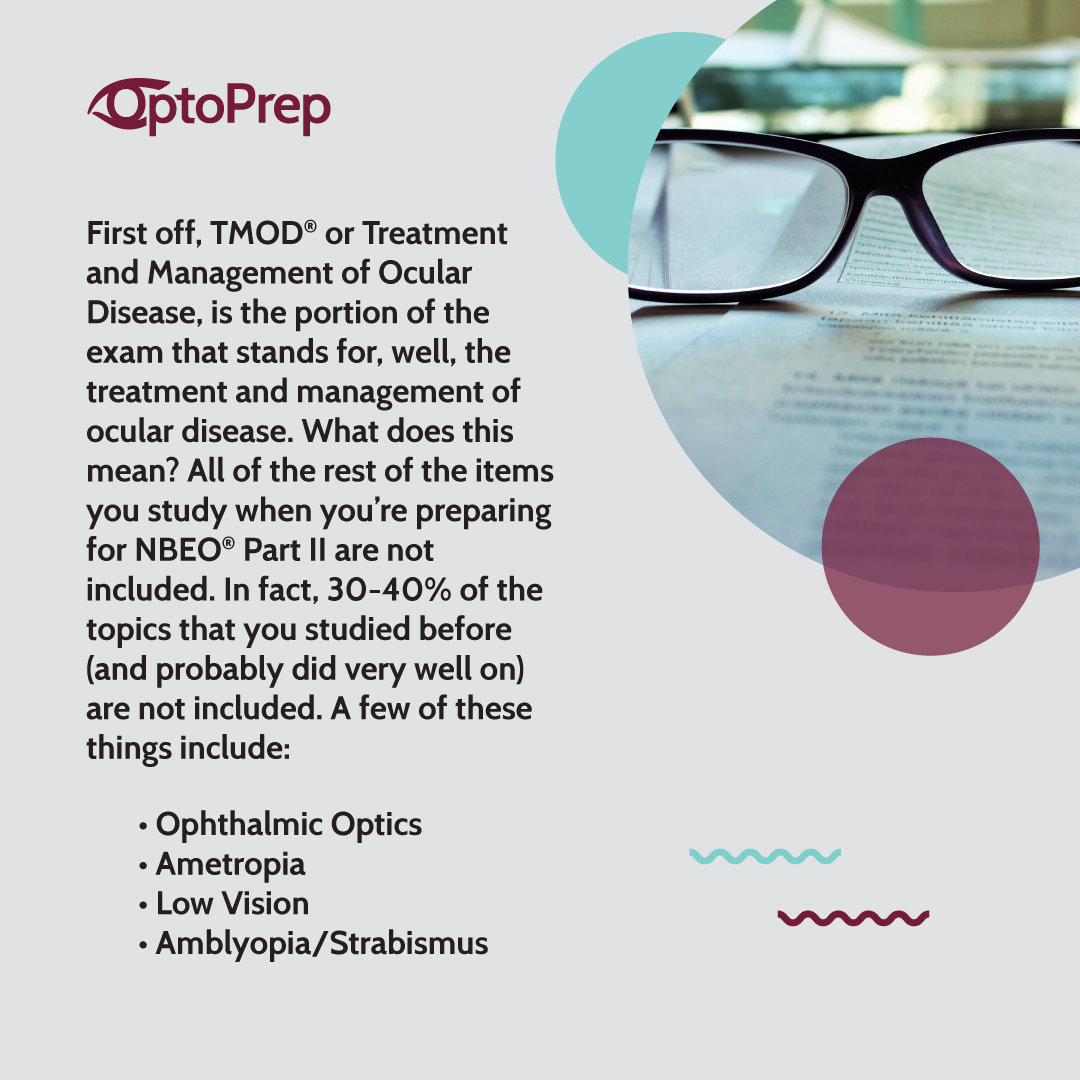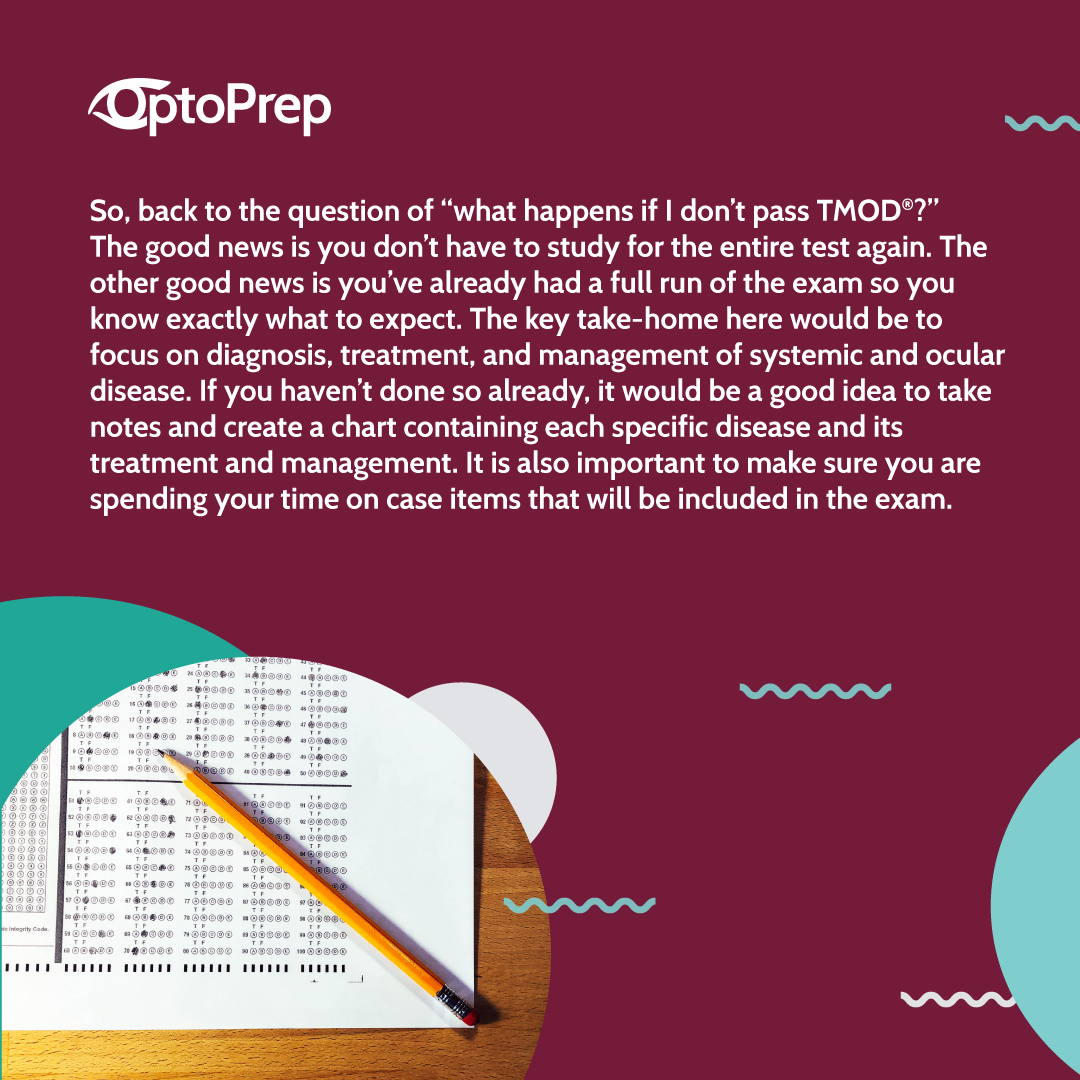
What happens if I don't pass the TMOD® ?
This is a question that runs through every single student’s mind while studying for NBEO® Part II. In fact, it’s probably one of the most researched topics when it comes to Part II. So, whether you’re purely just wondering, or you actually have to take TMOD® again, here is some info to ease your mind and help you prepare.
First off, TMOD® or Treatment and Management of Ocular Disease, is the portion of the exam that stands for, well, the treatment and management of ocular disease. What does this mean? All of the rest of the items you study when you’re preparing for NBEO® Part II are not included. In fact, 30-40% of the topics that you studied before (and probably did very well on) are not included.

A few of these things include: Ophthalmic Optics, Ametropia, Low Vision, and Amblyopia/Strabismus. In order to see what else is not included, simply refer to the content breakdown for Part II PAM®, and exclude everything that is not included on the content breakdown for TMOD®. Below is the TMOD® content breakdown adapted from the NBEO® website. TMOD® items are classified strictly in the Disease/Trauma Category.
| Lids/Lashes/Lacrimal System/Ocular Adnexa/Orbit |
| Conjunctiva/Cornea/Refractive Surgery |
| Lens/Cataract/IOL/ Pre- and Post-Operative Care |
| Episclera/Sclera/Uvea |
| Vitreous/Retina |
| Optic Nerve/Neuro-Ophthalmic Pathways |
| Glaucoma |
| Emergencies |
| Systemic Health |
Even though the topics are condensed for this type of exam, that doesn’t mean the format of the content included in the questions changes. The test items can include identification of proper diagnosis, related diagnoses, and treatment/management. Please note that unlike the NBEO® Part II PAM exam, you will not be asked for clinical correlation of science principles, legal issues/ethics, or public health. This takes a huge chunk of question possibilities out, so you can focus on specific treatment and management questions in your practice cases.
So, back to the question of “what happens if I don’t pass TMOD?” The good news is you don’t have to study for the entire test again. The other good news is you’ve already had a full run of the exam so you know exactly what to expect. The key take-home here would be to focus on diagnosis, treatment, and management of systemic and ocular disease. If you haven’t done so already, it would be a good idea to take notes and create a chart containing each specific disease and its treatment and management. It is also important to make sure you are spending your time on case items that will be included in the exam. Switching to TMOD® mode on OptoPrep® will allow you to study efficiently and bypass any item categories that are not
relevant or included in the TMOD® exam.
| Content |
PAM® |
TMOD® |
| # of full cases |
45-55 |
20-25 |
| # of mini cases |
15-25 |
5-10 |
| Solo items |
15-20 |
4-10 |
For your information and peace of mind, here is a breakdown of the number of questions/cases compared to PAM®.

You will find that studying for TMOD® by itself is much easier than trying to tackle the full exam. Stick to the topic outline provided by NBEO® and compile your list of ocular and systemic conditions. It is also important to remember that these are conditions that will very likely present to you as a practicing clinician, and remember, every exam brings you one step closer!
-Dr. Amadian
